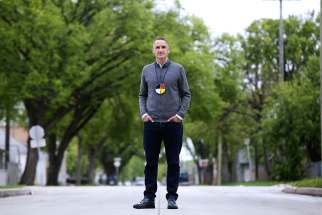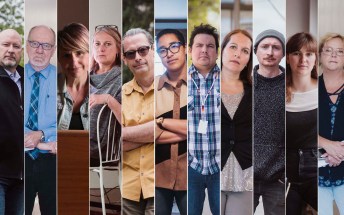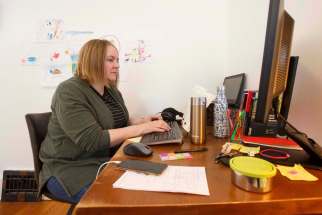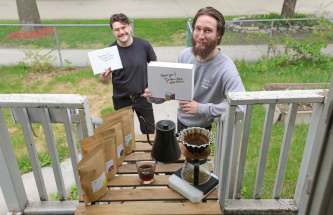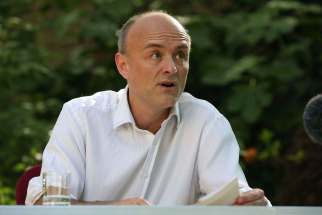Facts amid the fears Free Press staff reflect on the challenges of gathering, delivering crucial information to readers during unprecedented global health crisis
Read this article for free:
or
Already have an account? Log in here »
To continue reading, please subscribe:
Monthly Digital Subscription
$1 per week for 24 weeks*
- Enjoy unlimited reading on winnipegfreepress.com
- Read the E-Edition, our digital replica newspaper
- Access News Break, our award-winning app
- Play interactive puzzles
*Billed as $4.00 plus GST every four weeks. After 24 weeks, price increases to the regular rate of $19.00 plus GST every four weeks. Offer available to new and qualified returning subscribers only. Cancel any time.
Monthly Digital Subscription
$4.75/week*
- Enjoy unlimited reading on winnipegfreepress.com
- Read the E-Edition, our digital replica newspaper
- Access News Break, our award-winning app
- Play interactive puzzles
*Billed as $19 plus GST every four weeks. Cancel any time.
To continue reading, please subscribe:
Add Free Press access to your Brandon Sun subscription for only an additional
$1 for the first 4 weeks*
*Your next subscription payment will increase by $1.00 and you will be charged $16.99 plus GST for four weeks. After four weeks, your payment will increase to $23.99 plus GST every four weeks.
Read unlimited articles for free today:
or
Already have an account? Log in here »
Hey there, time traveller!
This article was published 29/05/2020 (1972 days ago), so information in it may no longer be current.
The marching orders from the publisher’s office as the Ides of March brought the coronavirus to Manitoba were crystal-clear: keep the newsroom operating, come hell or high water.
Alas, we had no global pandemic operating manual to draw upon. To make matters worse, one of our reporters had been ordered to get tested for COVID-19, and a positive result threatened to shut down all operations at the Free Press, given his movements throughout the building that week.
Amid the fear and uncertainty, our reporting staff immediately shifted to remote workstations, leaving only a skeleton staff of senior editors and key production personnel in our Mountain Avenue newsroom.
This pandemic has presented the biggest threat the Free Press has faced in its 148-year existence. Like newspapers everywhere, the pre-existing conditions of our business model made us extremely susceptible to the virus. In short order, all staff were taking big salary cuts to ensure we could keep the lights on.
And yet, we found a way to keep telling the stories our readers wanted and deserved. While others retreated, we remained on duty with reporters and photographers on the street, day and night.
Under the province’s emergency provisions, we were deemed an essential service.
These are our stories of what it took to deliver the essential service Manitobans needed, more than ever.
— Paul Samyn, Free Press Editor
CAROL SANDERS and LARRY KUSCH
Legislature reporters
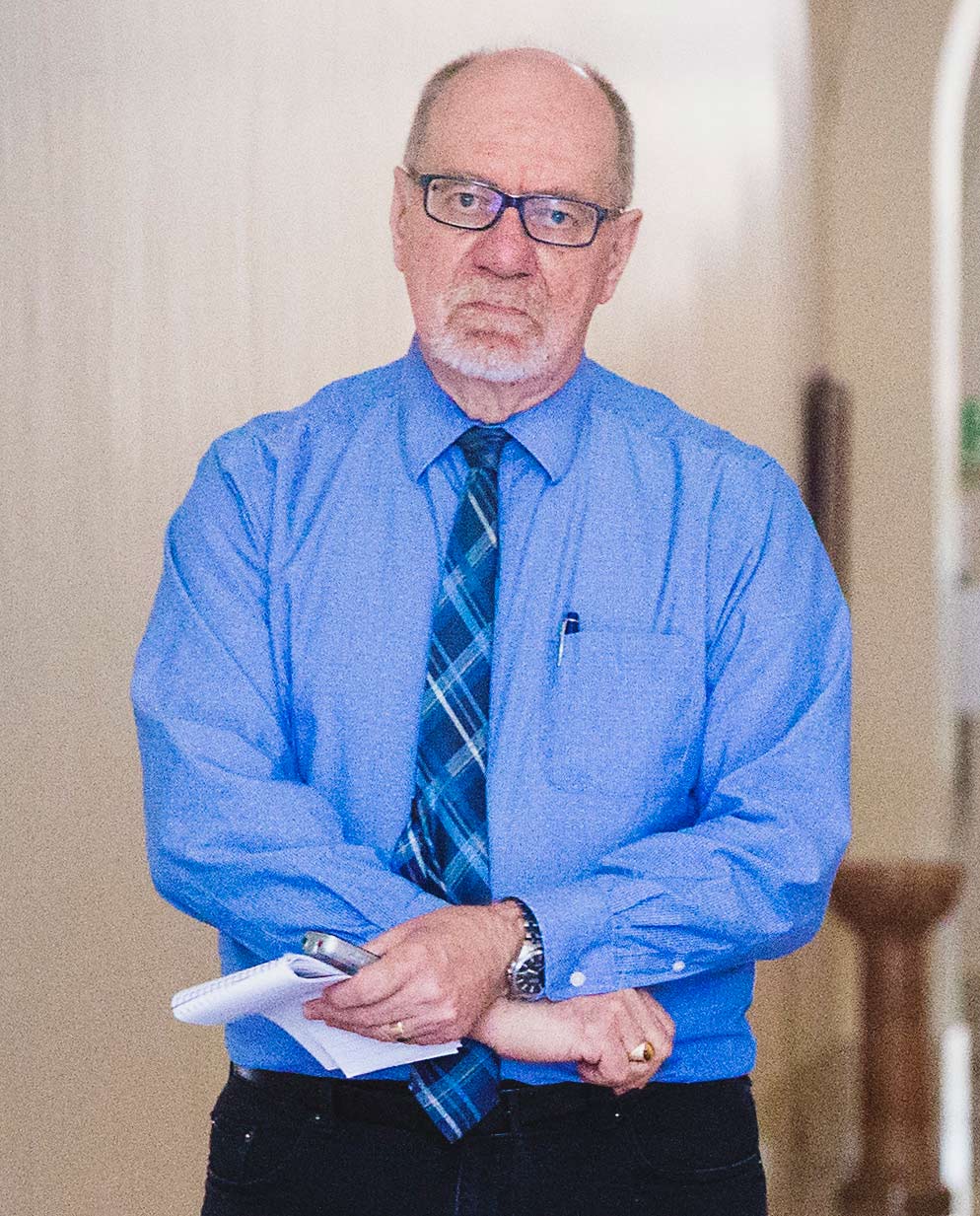
This is not what I was expecting.
I arrived at the legislature in late January to help out covering provincial politics and ended up reporting on Manitoba’s global pandemic response. In 30 years of reporting, I’ve never covered anything like this. It’s been a mix of fascinating, frightening and frustrating.
It began in February, with occasional press briefings in Room 68 in the legislature’s basement with the chief of public health, Dr. Brent Roussin, and Shared Health nursing chief Lanette Siragusa. It became a daily event as the virus took hold in Manitoba.
“For weeks, it was like getting hit in the face every day with a firehose of vital information… with a gut punch thrown in every time a Manitoban died from COVID-19.”–Carol Sanders
For weeks, it was like getting hit in the face every day with a firehose of vital information about new cases, new restrictions and new measures — with a gut punch thrown in every time a Manitoban died from COVID-19.

Social-distancing rules were imposed so just one reporter from each media outlet could attend the daily briefing. A short time later, no reporters were allowed to attend and that’s still the rule.
Instead of being able to face the decision-makers — Roussin, Siragusa, the premier and, occasionally, a cabinet minister — reporters have to ask questions at teleconferences.
One reporter from each media outlet is allowed to ask one question and a followup, making it tough to get the answers so many people need.
The pandemic has hit all industries hard, and the media is no exception. There have been layoffs and wage cuts throughout North America, including at the Free Press.
Fortunately, Manitoba still has a lot of news media to ask a lot of questions. Because there are still plenty of questions to be answered.
I’ve had the opportunity to cover a lot of big stories in more than 11 years in the Free Press bureau at the Manitoba legislature.
There have been three general elections, major floods — including a once-in-300-year deluge on the Assiniboine River; and a cabinet revolt.
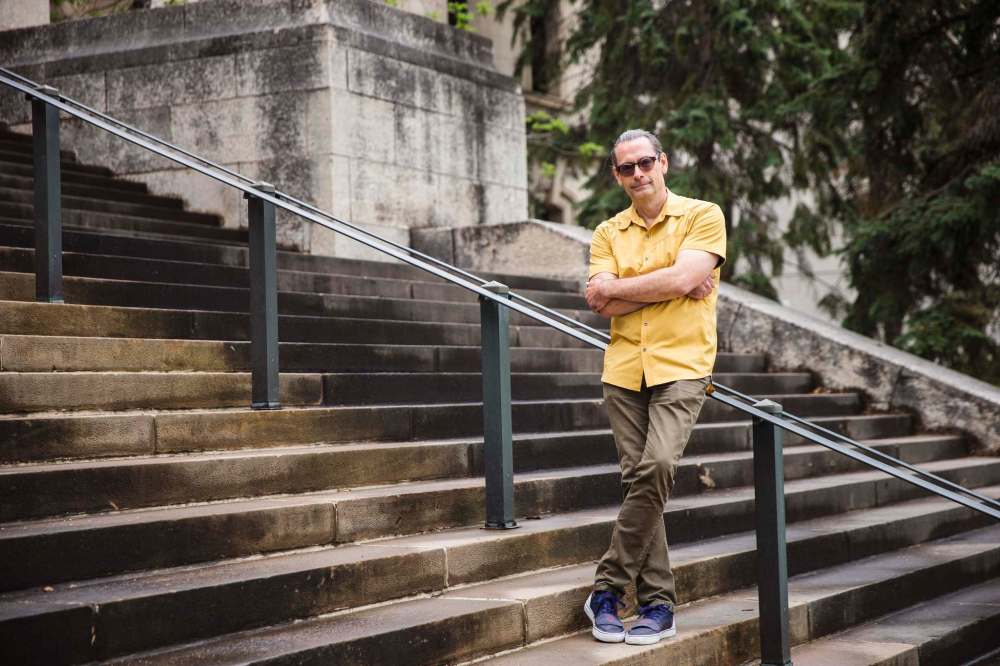
Three premiers, in that time, have occupied Room 204, the large second-floor office that faces north, like the Golden Boy.
But no event has so completely dominated the public agenda, transforming everyday life for Manitobans — and how the business of government is carried out — as this one has.
While the Manitoba Legislative Building has been the epicentre for COVID-19 updates and announcements, it’s been a strangely quiet place this spring.
Normally, this is one of the busiest times of the year at 450 Broadway, with MLAs sitting four days a week, the premier and his cabinet peppered with questions from the Opposition, bills being vigorously debated, visitors milling about.
“The two-person Free Press bureau has been the only ongoing presence in the building; reporters with other news outlets are working from home.”–Larry Kusch
No doubt a lot of work is still being done within the edifice’s Tyndall stone walls as the government copes with a crisis that will have ripple effects for generations, but scrutinizing its decisions is more challenging than usual.
Since March 19, the legislature has sat only five days, owing to the coronavirus. Due to physical-distancing rules, there are no formal press conferences and no scrums with the premier or ministers as they spill into the wide corridors after question period — only teleconferences with reporters with a set number of questions allowed.
The two-person Free Press bureau has been the only ongoing presence in the building; reporters with other news outlets are working from home.
— Larry Kusch
Julia-Simone Rutgers
General assignment reporter
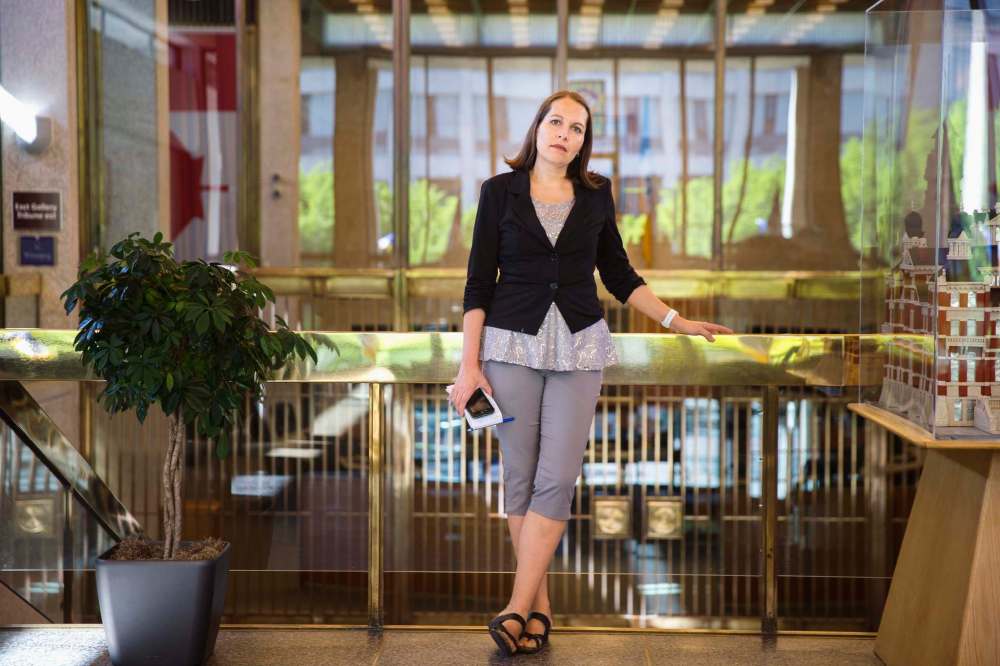
The same day I set foot in Winnipeg for the first time — flying in from Halifax at the very end of February — a possible COVID-19 case had also arrived, drifting through the airport on the way to Vancouver. I got an email from the airline, warning me about a possible contact with the virus that had yet to make a splash in Canada.
I thought little of it at the time.
I joined the Free Press four days later. Starting a new job in a new city is complicated and disorienting no matter the circumstances, but two weeks into getting to know my co-workers, my workplace and my new city, our world stopped in its tracks.
My plan of easing into Winnipeg life went out the window.
COVID-19 had become a concern in the province — Free Press reporters began working from home and my focus became joining the team in chasing the story on everyone’s minds: all virus, all the time.
“In a time when comforts have been few and heartbreaks have been constant, being well-informed feels like standing on solid ground.”–Julia-Simone Rutgers
Nearly a month later, four weeks into living and working out of the apartment I had just moved into, I woke up to a strange series of tweets from the Nova Scotia RCMP. There was a marked RCMP vehicle to be on the lookout for; Colchester county residents were being asked to stay inside.
I thought little of it at the time.
Hours later, the group of Halifax reporters I had said goodbye to only weeks before had been thrust into covering the greatest tragedy the country had seen in decades. A mass shooting, deep in the middle of a global pandemic, is a story like no other.
I watched from the sidelines, feeling helpless as my friends tirelessly chased two world-altering stories at once. Grief was thick in the air around me for weeks.
As the grief has risen around us, I have never felt more certain of the importance of my role: listening, observing, informing. In a time when comforts have been few and heartbreaks have been constant, being well-informed feels like standing on solid ground.
So, despite the grief, or perhaps in an effort to soothe it, I continue chasing. All virus, all the time.
Dean Pritchard
Law courts reporter
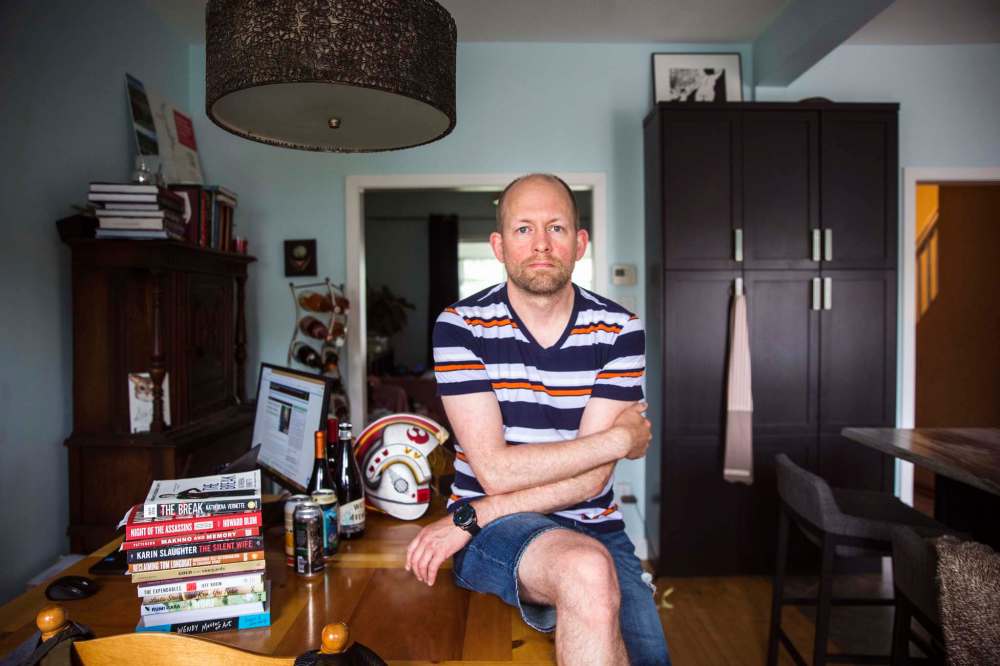
As I approach security on my way into the Winnipeg Law Courts, I offer a sheriff’s officer what has become my standard morning greeting: “No, no and no.”
No, I haven’t been outside the province in the past 14 days.
No, I haven’t been ordered to self-quarantine.
No, I am not feeling sick.
This is what now passes for start-of-the-day small talk in the time of COVID-19.
As a reporter, I’m among the few members of the general public still allowed inside each day. With social distancing still a pressing concern, aside from staff, only those directly involved with a legal proceeding and a maximum of two family members can get in.
It’s an edict appropriate to the circumstances we find ourselves in, but one that is at odds with a long-held judicial principle: justice must not only be done, it must be seen to be done.
Which makes it all the more important during these days that reporters continue to be the public’s eyes and ears.
"’I am your witness.’"-Dean Pritchard
Like many of our major institutions, the courts have experienced a dramatic disruption in the more than two months since the pandemic was declared, with all non-custody matters adjourned to dates pushed further and further into the future and the province’s circuit courts suspended altogether.
But the work at 408 York Ave. goes on, with the courts continuing to hear the most serious cases on its dockets. Because for those in custody, another legal maxim comes to mind: justice delayed is justice denied.
Covering the court beat, at least in terms of its day-to-day affairs, is not something easily done from a distance. I am your witness.
Signs of something approaching a return to a new normal are afoot, with Manitoba Court of Queen’s Bench now hearing matters already scheduled before the pandemic was declared. Beginning June 1, provincial court centres and some circuit courts will resume hearing out of custody matters “on a staged and incremental basis.”
And I’ll be back here Monday morning, greeting sheriff’s officers with another hearty: “No, no and no.”
Joyanne Pursaga
City hall reporter
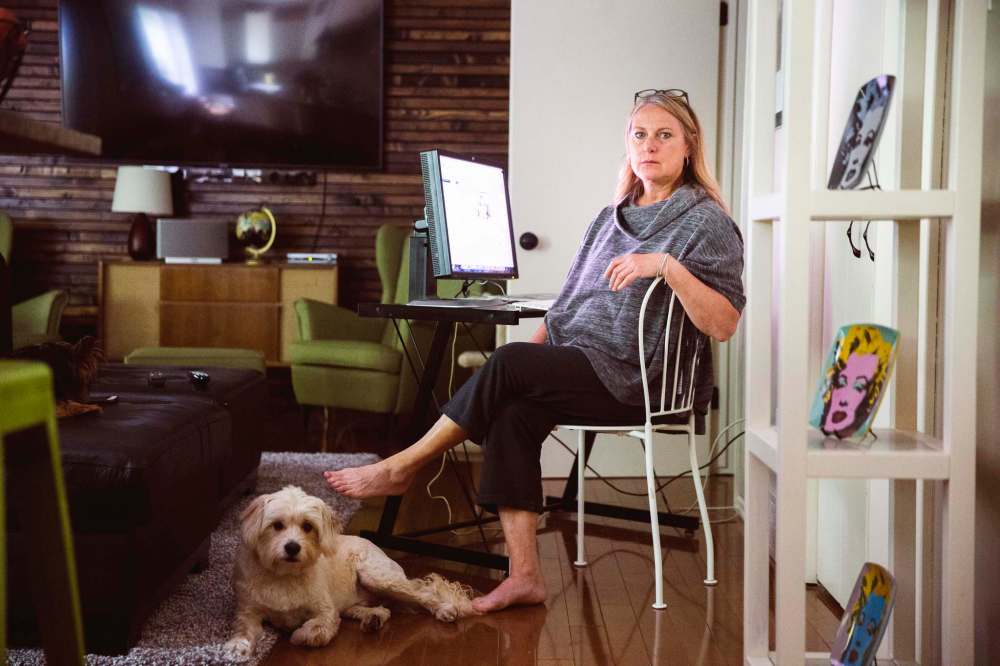
While reporting on city hall, I have often updated Winnipeggers on garbage contracts, water quality, sewage treatment and mosquito counts.
I have the privilege of informing readers about how civic government decisions on those files, and many others, affect them.
When the first presumptive positive case of COVID-19 was announced in Manitoba on March 12 — just 13 days before city council was scheduled to hold its final 2020-23 budget vote — that coverage shifted to include an influx of coronavirus developments.
The context and speed of city decisions also changed to reflect that new and daunting public health risk.
"Reporting on city hall is different now but I believe it’s even more important."-Joyanne Pursaga
For months, critics had railed against potential cuts that threatened to close some city pools, arenas and libraries to save money. Four days after the first presumed COVID-19 case, all city libraries, pools and recreation centres temporarily closed at once to reduce the risk.
Budget meetings sped up before council took a break to sort out new online meeting options.
My initial stories covered budget votes and new signs that asked city hall visitors to keep two metres apart.
By April 2, the city predicted the pandemic would create a massive shortfall in the budget they’d just adopted after months of heated debate.
The public has since been banned from city hall, the mayor now speaks to reporters through a video feed and I am now sometimes one of very few unelected people in council chambers during meetings.
My job has certainly changed in the midst of COVID-19 but the decisions made by city council will still affect the water that runs through your taps and how your tax dollars are spent.
Reporting on city hall is different now but I believe it’s even more important.
When the city finally reaches a “new normal,” I hope Winnipeggers will feel well-informed about how COVID-19 affected their local government and all the decisions that council made while the virus spread.
Ben Sigurdson
Books editor / beverages writer
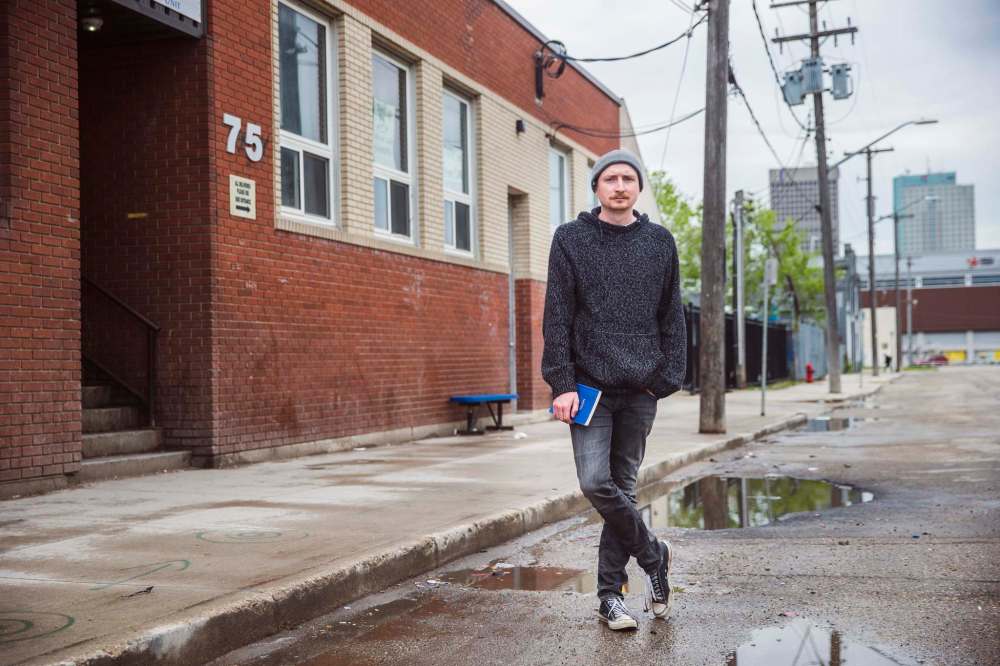
Not everyone might consider reporting on cancelled author tours, the state of local booksellers and how to best obtain wine, beer and spirits via curbside pickup or delivery an “essential service.”
But I recognize my beats cover areas that offer readers a distraction from the daily grind of COVID-19 coverage — maybe a different way to cope.
On the literary front, we started the Free Press Book Club in conjunction with the recently reopened McNally Robinson Booksellers. The first meeting took place May 25 via Zoom and a livestream to YouTube, and the virtual event followed a typical McNally book-launch format: an author introduction, a short reading from the book by the author and a Q&A.
For our first virtual book club meeting we enlisted local Governor General’s Literary Award-winning author Katherena Vermette to read from, and field questions about, her gripping debut novel, 2016’s The Break.
Winnipeggers responded in droves, with hundreds of people (who needn’t be Free Press subscribers) joining the book club, submitting questions by email and via comments on the video.
Our next meeting is scheduled in June and will feature locals Daria Salamon and Rob Krause. Given our inability to travel, their 2019 book Don’t Try This At Home: One Family’s (mis)Adventures Around the World will provide some welcome comic relief.
"’My beats cover areas that offer readers a distraction from the daily grind of COVID-19 coverage — maybe a different way to cope.’"-Ben Sigurdson
On the drinks front, I’ve revived the Spit Take tasting videos I’ve done in the past for the Free Press, albeit from my home office. Every Friday at 5:30 p.m., I pop and pour a wine, beer or other beverage in front of my laptop and phone, streaming a live, real-time tasting to Facebook and Instagram.
While I often ramble and things sometimes go a bit sideways, every week I have people tasting along and telling me how much fun they’re having.
Raising a glass and sipping on something is so often a social endeavour, and people miss that right now.
And even if providing some distraction and virtual camaraderie is all I’m contributing to our COVID-19 coverage, I’m OK with that.
Leesa Dahl
Graphic artist
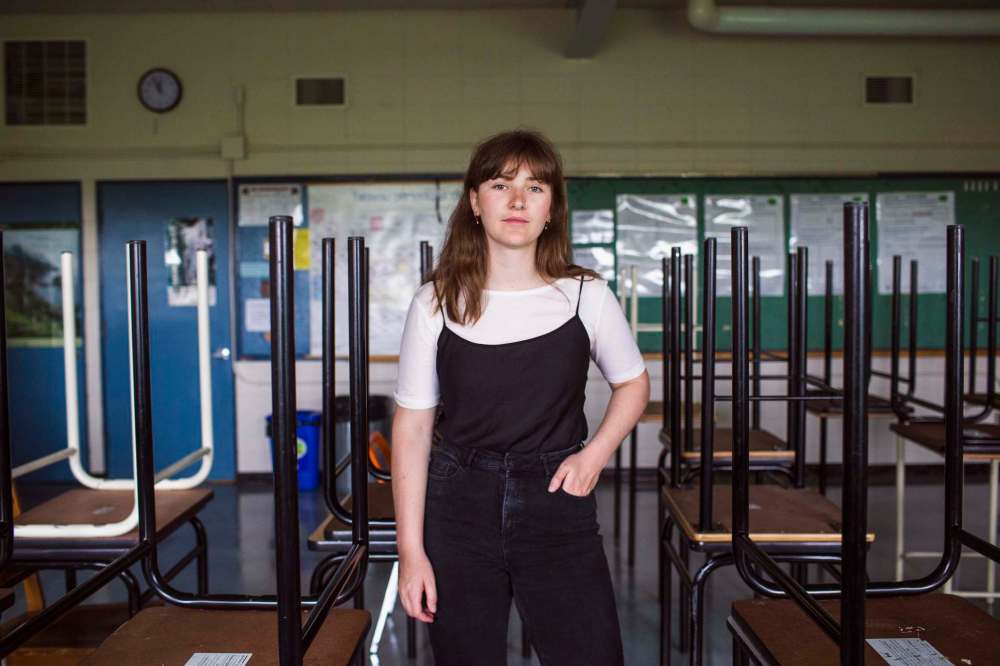
There’s very little banter inside the walls of my unremarkable home office in North Kildonan. These days, my makeshift workplace in the family room lacks the cheerful camaraderie of dedicated Winnipeg Free Press reporters, photographers and editors; and despite sharing a home with three grown daughters, a husband, two dogs and a cat, I’m often lonely.
When the coronavirus pandemic arrived in this country in the early days of March, I was anxiously awaiting a COVID-19 test result that kept me inside and forced me to work from home.
Back then, I was using my 13-inch MacBook Air with a remote desktop operating system. It allowed me to connect to my 21.5-inch iMac computer at the Free Press, see my desktop and interact with it as if I were sitting at my desk in the newsroom on Mountain Avenue.
"’I’m terribly proud of the important work my hard-working newsroom colleagues and I have produced since the coronavirus pandemic took hold of our lives. ‘"-Leesa Dahl
But as the days turned into weeks, the struggle to lay out the week’s broadsheet pages on a 13-inch screen became too much to bear.
I was tired of sitting hunched over at my kitchen counter. My back ached and when my weary eyes began to blur I decided to pick up my HP desktop PC from the newsroom.
Since then, the large-screen monitor, which I connected to my laptop, has allowed me to continue designing the Free Press newspaper in the comfort of my own home.
It’s been a challenge — five people vying for the wireless high-speed Internet and network connections inside one house has its drawbacks — but I’m terribly proud of the important work my hard-working newsroom colleagues and I have produced since the coronavirus pandemic took hold of our lives.
And as we transition back to our workspace on the third floor of the Free Press building, I’m looking forward to seeing their faces, sharing our ideas and basking in the joyful jocularity.
Ryan Thorpe
General assignment reporter
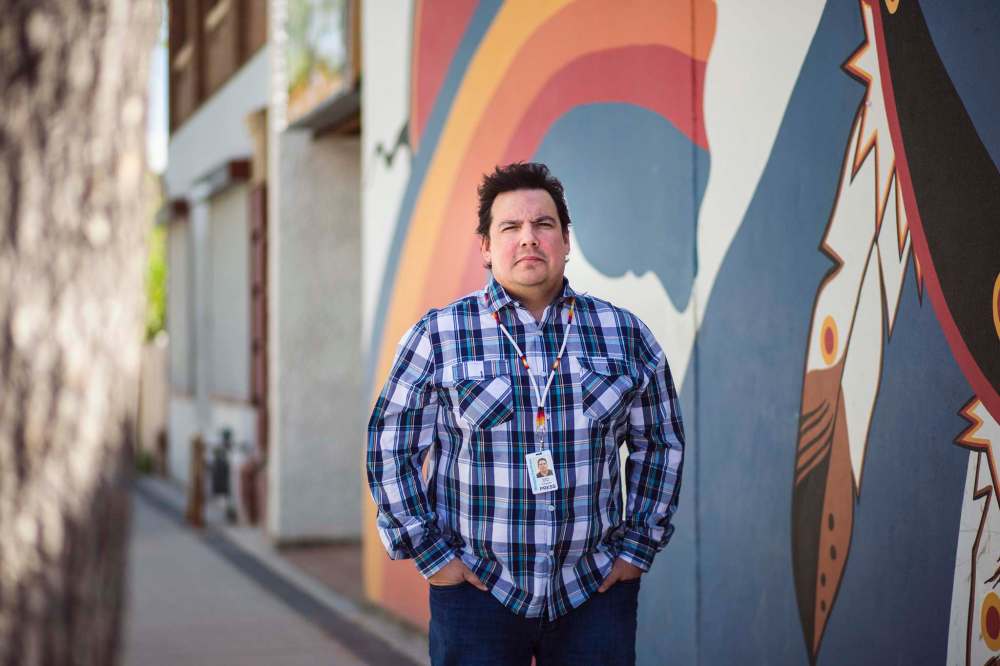
It’s going to spread like wildfire.
That was my worry for Winnipeg’s homeless community when it became clear the novel coronavirus pandemic had taken root in the city on March 12.
I was in the middle of a long-term reporting project on homelessness, and it quickly became apparent the focus of my work — for the time being — would have to shift.
Rather than documenting what it was like living on the streets of Winnipeg, I would now be documenting the impact of the pandemic on one of the most marginal, at-risk populations in our community.
I’d come to know people living in our city’s shelters and in makeshift encampments outside in the cold. I’d seen how they lived, learned about their struggles and spent time with the people dedicated to helping them.
The reality is social distancing isn’t easy when you have nowhere to call home. Space in shelters is limited, people in encampments crowd together for safety and hygiene products — let alone personal protective equipment — are not easy to access.
On top of that, many homeless people have poor immune systems, or are actively struggling with addictions.
"’One of the best ways to demonstrate something matters is with our attention. We show we care by looking and listening.’"-Ryan Thorpe
While I was worried for these people, I knew there was a community of dedicated social service professionals and volunteers who would rally around them, doing whatever they could to help the homeless through this crisis.
At the same time, I was worried for myself. My reporting took me into shelters, tent cities and encampments, outreach vans and an isolation complex. If the worst predictions proved true and the virus spread through the homeless population, these locations would be virtual petri dishes.
When the pandemic hit, I was roughly eight months removed from an emergency surgery after my right lung spontaneously collapsed. Given my medical history, I was concerned I might be at elevated risk of complications, should I contract COVID-19.
But the story of how Winnipeg’s homeless community stared down the pandemic was too important to leave unreported. Their lives and their struggles, so often forgotten or ignored, matter.
And one of the best ways to demonstrate something matters is with our attention. We show we care by looking and listening, and — if we’re lucky — our work as reporters can force others to look and listen with us.
It felt like the least I could do.
Maggie Macintosh
Education reporter
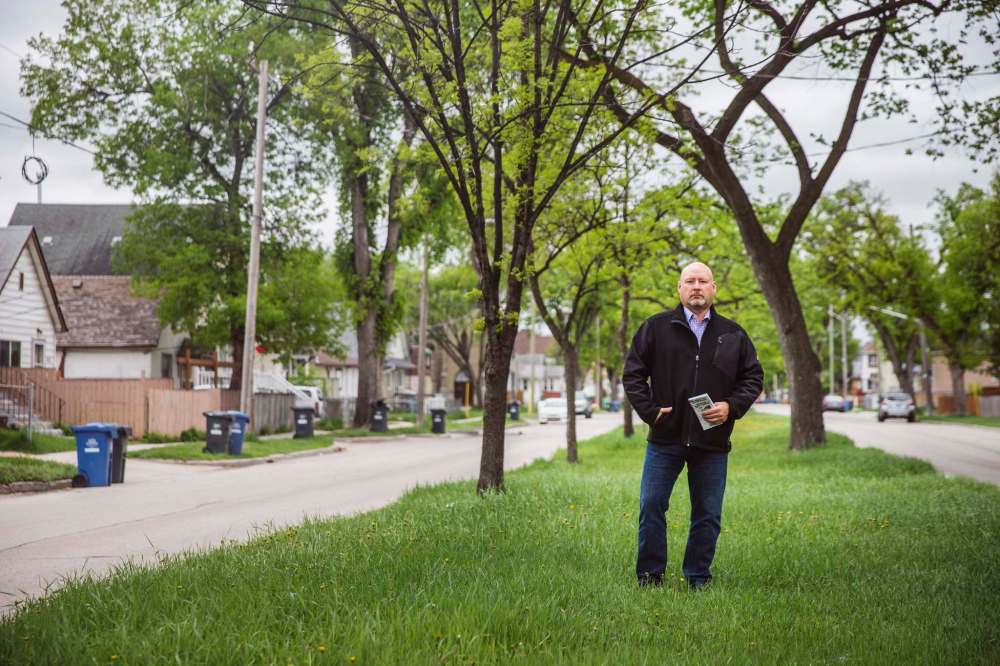
At some point, between talking middle-school math and video-call lessons, the voice on the other end of the line began to cry.
“I’m getting emotional because I miss them,” the grades 6 and 7 teacher said after taking a moment to collect herself. “That is why we got into teaching, to be with them, and to have them learn.”
It wasn’t the first time I’d listened to a teacher break down during a phone interview about the adjustment to distance learning.
Tired and teary-eyed, teachers have been on the front lines since the province suspended classroom learning as of March 23 — at first, for three weeks; even the naive thought it optimistic.
Months later, as the 2019-20 school calendar fades, attention is turning to how schools will address the inevitable learning gaps created during the pandemic.
"’As the lockdown loosens, it will be critical to continue to have honest conversations about education.’"-Maggie Macintosh
Educators are divided on how to tackle what’s being called “COVID learning loss” — an updated extension of the annual summer phenomenon, in which students who don’t keep their brains active lose, on average, one month’s worth of classroom learning during the break.
Some suggest schools should start early and squeeze in more learning days to allow for extensive reviews in autumn.
Others, however, argue teachers should focus on what students did learn during the disruptions, whether it was baking cookies or building emotional resilience.
Virtual classrooms have seemingly made people vulnerable, either that or I’m getting a handle on my new beat as a Local Journalism Initiative education reporter — a post I took on weeks before COVID-19 arrived in Manitoba. Or both.
Pre-pandemic, the now-postponed education review put the province’s K-12 system on the mainstage. The pandemic has turned on the spotlight.
But as the lockdown loosens, it will be critical to continue to have honest conversations about education. The long-term ramifications of the virus on learning will be felt for years to come.
Niigaan Sinclair
Columnist
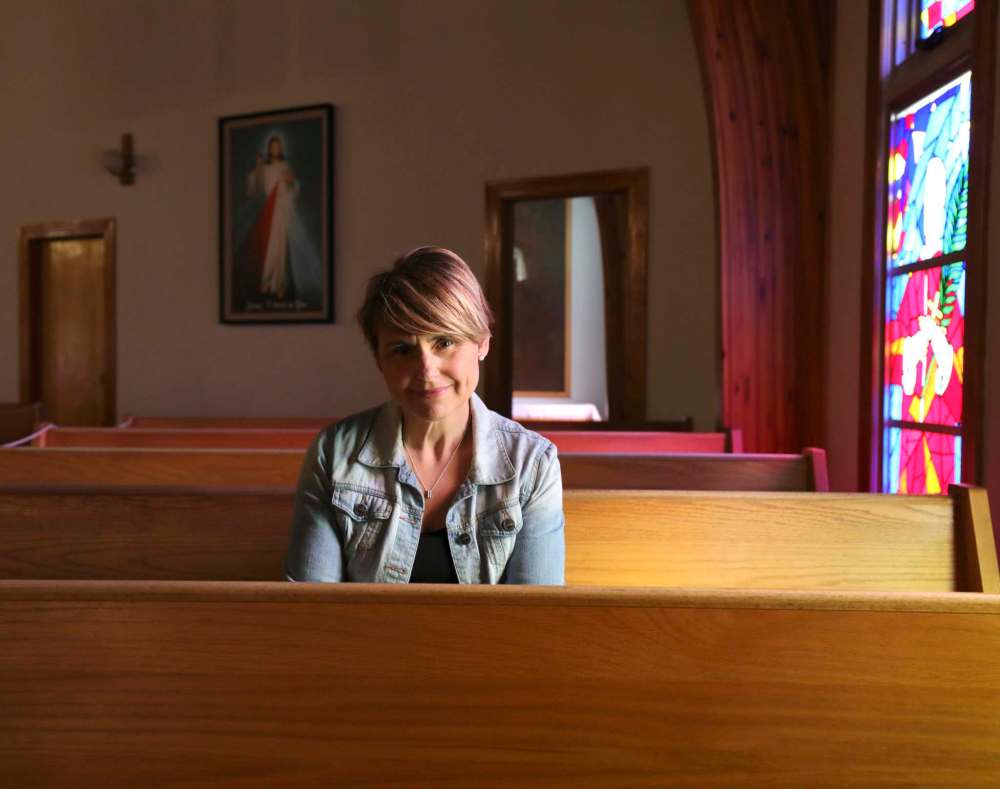
The COVID-19 pandemic is not the first time Indigenous peoples have fought sickness in this territory.
In the 1780s, a smallpox epidemic eventually found its way here, interrupting the lives of a huge, expansive and growing community of Cree, Lakota and Nakota peoples living where Main Street and Broadway are now.
After suffering thousands of deaths fighting the disease, the community innovated their cultures and traditions, splitting and migrating in multiple directions, changing the political and social fabric of this place and allowing for other Indigenous and settler communities to move in.
Pandemics change lives permanently. That’s what characterizes them the most.
COVID-19, however, didn’t enter healthy, self-sustaining Indigenous communities but those impacted by more than a century-and-a-half of imposed poverty, trauma and violence. This means the virus spreads faster, lasts longer and is more difficult to fight in Indigenous communities than anywhere else.
"’The experiences, struggles and lives of all matter here.’"-Niigaan Sinclair
Protecting those most vulnerable to the onset of this virus — which can come back any time and anywhere until a vaccine is found — is of paramount importance.
Indigenous struggles for survival aren’t new, but harder than ever with COVID-19.
In a city that often forgets that one-fifth of its citizens are Indigenous (and the rest working with, married to or living beside us), the struggle to remind everyone that fighting this pandemic in Indigenous circles means everyone benefits is not easy.
Long-held, entrenched attitudes and beliefs live in the stories we tell one another, and no story is harder to tackle than the one that says Indigenous peoples don’t matter.
As always, I write “Indigenous” stories but these are really about how we are all in this together. The experiences, struggles and lives of all matter here.
This is what makes us treaty people.
This is what makes us Winnipeggers and Manitobans.
This is what makes us family.
Jason Bell
Sports reporter
A long time had passed since I’d pursued a jarring story of senseless tragedy.
Dustin Byfuglien’s decision to step away from hockey or the struggles of the Winnipeg Jets’ penalty kill certainly doesn’t qualify.
Early in the morning on March 19, cab driver Balvir Toor was out doing his job, providing for his family. He was stabbed to death by someone he had just picked up on Burrows Avenue near McGregor Street at about 5:30 a.m.
I hustled to the scene. Yellow police tape spanned a full city block. The cab was parked at an odd angle, the doors still open. Eerily, the emergency light atop the car was still flashing — the victim’s desperate attempt to alert someone that he was in trouble.
After knocking on a few neighbourhood doors, with limited results, I returned to my office — a makeshift workspace in my rec room.
When the Jets’ push to the playoffs was placed on hold after the suspension of NHL’s 2019-20 season, a couple of us in sports were pulled into news on a part-time basis.
We couldn’t hazard a guess as to how long the new working arrangement would last, although I wasn’t troubled by it.
"’When the Jets’ push to the playoffs was placed on hold… a couple of us in sports were pulled into news.’"-Jason Bell
I was a Free Press general assignment reporter for years (I also led the newspaper’s breaking news coverage for the better part of five years) and covered far too many weekend homicides and spoke with far too many grieving relatives.
Interviewing grumpy Jets captain Blake Wheeler following a defeat is child’s play, by comparison.
So, while I haven’t watched a Jets practice and dissected the latest forward-line combinations or received a chuckle from Paul Maurice’s daily chats, I’ve been pretty busy.
Head to the scene of a homicide? Track the potential for flooding in the Red River Valley? Attend a vigil for an alleged teen car thief fatally shot by police? Listen to and speak with members of a pipe band at the site of an East Kildonan cenotaph on V.E. Day?
Been there, done that since the pandemic began, which was right after I returned March 10 from the Brier in Kingston, Ont., the last Canadian party without masks and social distancing.
But I’m ready for a return to regular programming.
Ruth Bonneville
Photographer
I drove into the empty parking lot of St. Nicholas Tavelich Parish off Main Street. There was not a soul in sight when I arrived. It was early April and fears of catching the COVID-19 virus loomed everywhere.
The large, fortress-like brick church towered over the vacant lot that surrounded me. My assignment was to capture an Easter photo that would tell the story of COVID-19’s impact on the Christian faith during its most important week of the year.
The virus and Easter represented opposite themes. The first: isolation, fear and death. The second: communion, faith and life. There have been many instances while working through this pandemic that have brought unique challenges, and capturing the essence of this assignment was no exception.
I called Father Peter Nemcek, a young, newly appointed priest, while still in my car. This was the new normal for us when we arrived at an assignment, to park outside the establishment and plan a strategy to enable social distancing when going inside. He instructed me to make my way up the long ramp to the side door which he would leave open for me to come inside.
"’There have been many instances while working through this pandemic that have brought unique challenges.’"-Ruth Bonneville
The sanctuary was filled with both shadow and light. My eyes were immediately drawn to the beautiful, pink-, red- and orange-hued light that cascaded through stained-glass arched windows and brilliantly illuminated the south side of the church.
As Nemcek gave me a tour of the church, he showed me his setup for his online Easter service. I could hear the regret in his voice as he spoke of having to use technology to connect with his flock.
As he made his way throughout the church I followed him from a safe distance while hunting for that quintessential image that would embody the hopefulness of Easter and not just the uncertainty left behind in COVID’S wake.
At one point he made his way to the confession room at the back of the church. On the wall hung a captivating painting of the crucified Christ painted by one of the church parishioners. The more I looked at it the more it drew me in.
As light streamed into the room through the stained-glass window, Nemcek stood with his book of prayers next to the painting.
At that moment, I knew this was the image that captured the themes of loss and new life that both Easter and the virus shared.

